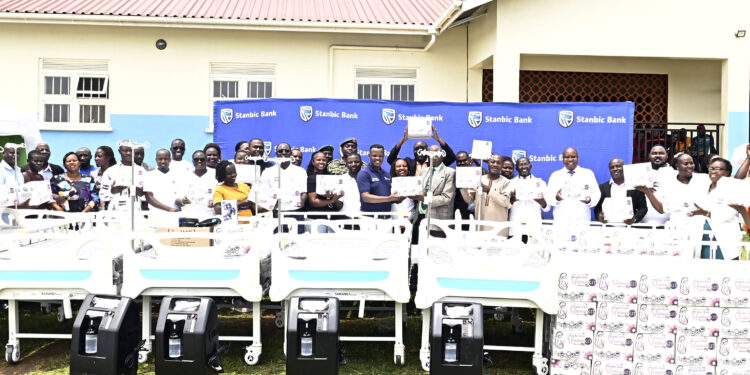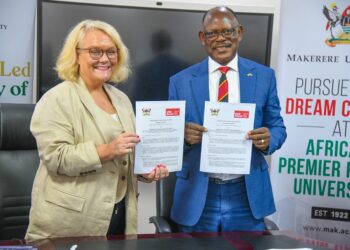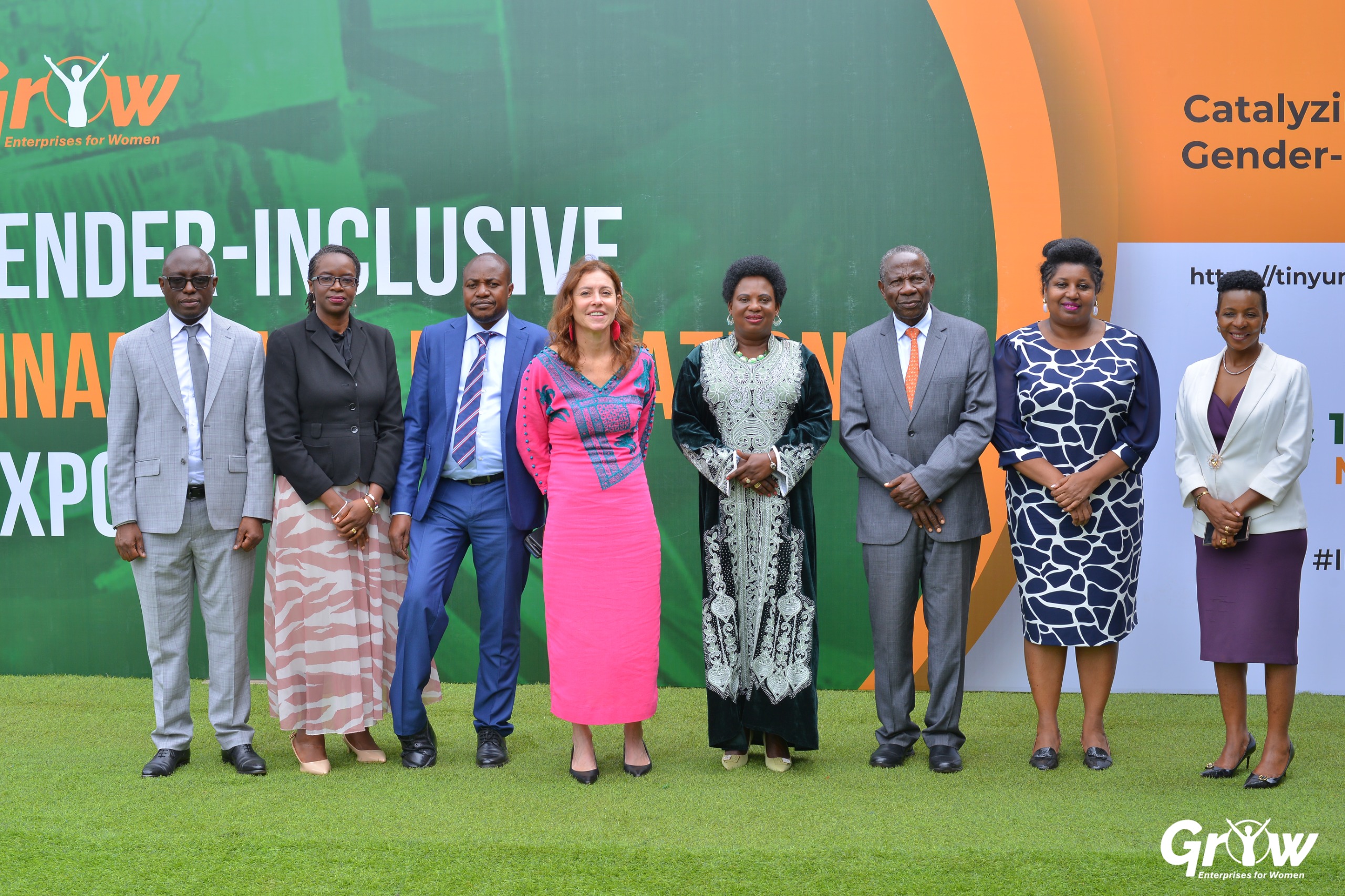KASESE: A recent donation of maternal health equipment worth UGX44 million to Rukoki Health Centre IV in Kasese District by Stanbic Bank Uganda, is solving 90% of the facility’s prevailing maternity ward challenges.
Speaking during the handover ceremony, Dr. Edward Wefula, the facility’s in-charge, commended the bank for the timely support. He described the donation as “a lifeline that has restored dignity and efficiency to maternal care services at Rukoki.”
Dr. Wafula said, “This donation has solved 90% of the problems we have been grappling with in the maternity ward. The donations received today include four oxygen concentrators meaning we shall now not lack oxygen. The consignment also had 10 modern maternity beds and all their accessories, two blood pressure machines, 200 Mama Kits among others. I want to give an assurance that we can now provide safer deliveries, better neonatal care, and improved hygiene for both mothers and babies.”
The equipment is part of a bigger consignment worth UGX 300 million being distributed to select health centres in a drive launched last week by the Permanent Secretary of the Ministry of Health, Dr. Diana Atwine.
The initiative aims to strengthen facilities across Uganda, particularly those facing challenges in providing maternal and child health services. Since the start of the year, Stanbic Bank has donated medical equipment to more than 10 health facilities across Uganda and plans to reach at least nine more by the end of October.
Speaking while flagging off the this countrywide initiative, Dr. Diana Atwine praised the Stanbic Love Month donations that have significantly complemented the government efforts boosting access to quality health care especially in the maternal health space.
She said, “A healthy Uganda cannot be built by government alone. Partnerships like this one are critical if we are to ensure no mother dies while giving life. Therefore from the bottom of my heart, and on behalf of the government of Uganda, I want to salute Stanbic always standing with Ugandans and fulfilling your commitment.”
Rukoki Hospital is a government-owned facility that was recently upgraded from a Health Centre IV to a hospital at the start of this financial year in July 2025.
According to staff members, despite its new status, the hospital is overwhelmed by a high patient volume and a large catchment population, leading to poor services, a shortage of beds, and makeshift facilities for patients. The hospital delivers between 200 and 300 children on a monthly basis.
While handing over the consignment, Stanbic Bank Head of Coverage, Sam Bulenzi praised the resilience of Rukoki’s medical staff, recalling the tragic fire that engulfed the facility in June 2021, destroying equipment worth millions of shillings.
Bulenzi said, “We are all aware of the tragedy that struck in 2021, yet out of that adversity rose a renewed sense of purpose. Your resilience and commitment to saving lives is what inspire us to be here today.”
He said the donation is in line with Stanbic Bank’s purpose, ‘Uganda is our home, We drive her growth’.
Rukoki Health Centre continues to serve as a critical referral facility for thousands of patients from across the Rwenzori region, also absorbing overflow cases from nearby health centers and Kilembe Hospital, which has been repeatedly affected by floods.
Bulenzi said, “For us, driving growth doesn’t stop at financing businesses and farmers. It also means strengthening essential sectors like health, education environment stewardship which the backbone of our nation.”
Kambale Frigo, the Kasese Municipality member of parliament thanked the bank for the gesture, noting that the support will directly improve maternal and neonatal outcomes in the region.
Slyvia Atuhaire, the Stanbic Head of distribution highlighted that the donation coincides with the bank’s annual “October Love Month,” a period dedicated to giving back to communities in celebration of Uganda’s Independence and Global Customer Service Month.
Uganda has made progress in maternal health, with its maternal mortality ratio (MMR) declining to 189 per 100,000 live births as of 2022, a 44% drop from 336 in 2016. However, challenges remain, including inequities in service access, low completion rates for recommended antenatal care visits, and logistical issues like delayed medicine deliveries. Common causes of maternal deaths include obstetric hemorrhage, hypertensive disorders, and infection.
Do you have a story in your community or an opinion to share with us: Email us at editorial@watchdoguganda.com














